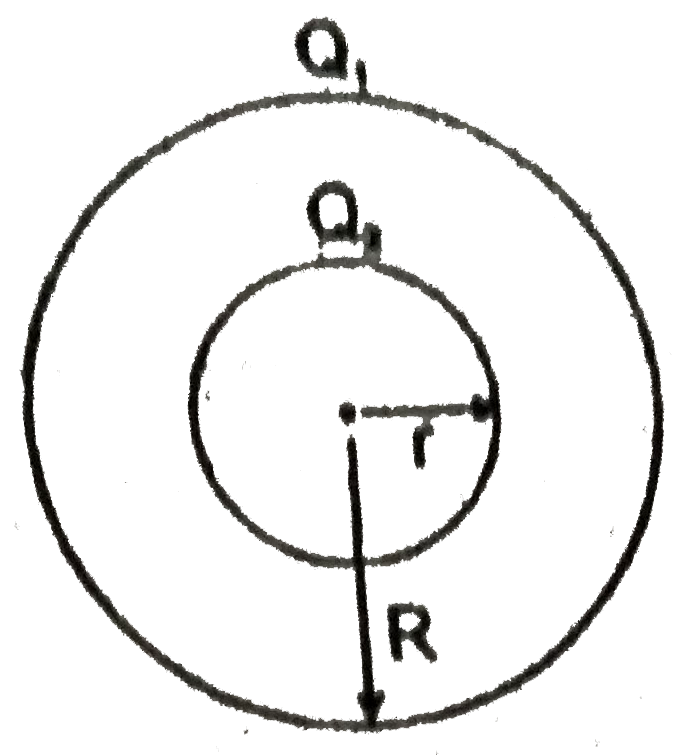Let V(r) denote the sum of the first r terms of an arithmetic progression (AP) whose first term is r and the common difference is (2r−1).LetT(r)=V(r+1)-V(r)-2 and Q(r) =T(r+1)-T(r) for r=1,2Whicho≠ofthefollow∈gisacorrectstatement?(A)Q_1, Q_2, Q_3…………..,are∈A.P.withcommond⇔erence5(B)Q_1, Q_2, Q_3…………..,are∈A.P.withcommond⇔erence6(C)Q_1, Q_2, Q_3…………..,are∈A.P.withcommond⇔erence11(D)Q_1=Q_2=Q_3Solution in Kannada
Q1,Q2,Q3,..... are in AP with common difference 5
Q1,Q2,Q3,..... are in AP with common differemce 6
Q1,Q2,Q3,..... are in AP with common difference 11
Q1=Q2=Q3=.....
The correct Answer is:B
Since, Tr=3r2+2r−1
∴Tr+1=3(r+1)2+2(r+1)−1
∴Qr=Tr+1−Tr=3[2r+1]+2[1]
⇒Qr=6r+5
⇒Qr+1=6(r+1)+5
Common difference =Qr+1−Qr=6
Similar Questions
Two uniformly charged concentric spherical shells of radius R and r, are given charges Q1 and Q2 respectively. If their potential difference is V, then it will not depends upon:

View SolutionLet V_r denote the sum of the first r terms of an arithmetic progression (AP) whose first term is r and the common difference is (2r-1). Let T_r=V_(r+1)-V_r-2 and Q_r =T_(r+1)-T_r for r=1,2 .The sum V1+V2+...+Vn is
View SolutionLet Vr denote the sum of the first r terms of an arithmetic progression (AP) whose first term is r and the common difference is (2r−1).LetT_r=V_(r+1)-V_r-2 is always (A) an odd number (B) an even number (C) a prime number (D) a composite number
View SolutionLet V_r denote the sum of the first r terms of an arithmetic progression (AP) whose first term is r and the common difference is (2r-1). Let T_r=V_(r+1)-V_r-2 and Q_r =T_(r+1)-T_r for r=1,2. Which one of the following is a correct statement?
View SolutionAt what distance from charge +Q_1 on the line joining the two charges (in terms of Q_1, Q_2 and r) will this work done by zero?
View SolutionLet an be the nth term of an A.P. If 100∑r=1a2r=α&100∑r=1a2r−1=β, then the common difference of the A.P. is -
View SolutionLet V_(r ) denotes the sum of the first r terms of an arithmetic progression whose first term is r and the common difference is (2r-1) . Let T_(r )=V_(r+1)-V_(r)-2" and " Q_(r )=T_(r+1)-T_(r )" for " r=1,2,"...." The sum V1+V2+...+Vn is
View SolutionLet V_(r) denote the sum of the first r terms of an arithmetic progression (A.P.) whose first term is r and the common difference is (2r - 1). Let T_(r) = V_(r+1) - V_(r) - 2 and Q_(r) = T_(r + 1) - T_(r) for r = 1, 2, …. The sum V_(1) + V_(2) +...+ V_(n) is
View Solution
